This post may contain affiliate links. If you click an affiliate link and make a purchase, I may earn a commission. Also, as an Amazon Associate, I earn from qualifying purchases.--
Are you tired of keeping your bike at your house or in your apartment? Keeping your bike indoors is the best way to store your bike. Leaving your bike outdoors may expose it to rust, corrosion, and theft. However, always having to drag it in and out of your home can be a big hassle, and a huge mess in wet conditions.
So what should you do if your only option is to store it outdoors? You could store it in a visible well lit-area, under a waterproof breathable cover, with a bike alarm, multiple locks, and consider getting bike theft insurance. You could also store it in a damp-proof shed in your backyard.
If your landlord is against drilling holes to mount it on your wall, or your spouse is tired of it dirtying the floor, then you’ve come to the right place.
In this article, you will learn all 9 ways to store a bicycle outside to keep it safe, reduce the need for maintenance and reduce the rate of rust and corrosion.

Drawbacks To Storing Your Bike Outside
It can be very convenient to leave your bike outside. That’s especially if you live in a high-rise apartment and there are limited options for storing your bike outside. You should note though that there are drawbacks to doing so. You can find these below:
| Drawback | Reason |
| Rust and corrosion | Rain and water splashes from the ground in wet conditions can accelerate the rate of rust and corrosion on your bike and bike lock if left outside for long periods of time. |
| Reduction in the efficiency of moving parts | When water consistently gets into your bike’s moving parts, it could increase wear and decrease the performance and efficiency of your bike; particularly if you don’t lube them often. |
| Theft | Bikes can have good resale value – unfortunately, thieves know this too. When you leave your bike outside, it can attract prying eyes looking for an easy target (I’ll explore how to address this later in the article). |
| Fading of bike paint | Over time, the ultraviolet light from the sun can make the molecules in your paint’s resin break apart; causing it to chip away, break down and fade (source). You can reduce this effect by storing it in shade away from sunlight. |
| Damage to plastics | Over time, sunlight, and oxidation cause plastic to become brittle and gradually break down (source). This is of course something to consider for the parts of your bike made from plastic. |
Great Ways To Store Your Bike Outside
Whichever way you store your bike, make sure to clean and lube it whenever needed.
Why is this necessary? Well, it will keep it functioning well and protected from rust for as long as possible.
Also, ensure in the rainy season to put a plastic bag over your saddle. Do this particularly if your saddle is made out of leather, as leaving it in the rain for long periods of time can cause it to tear and sag.
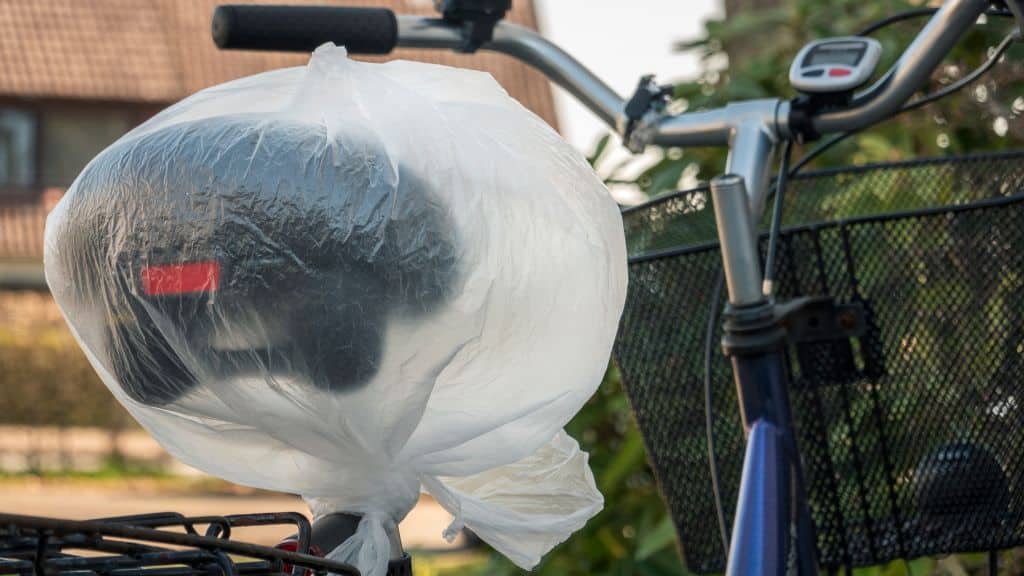
1. Store In A Well-Lit Area
No thief wants to get caught in the act. As such, they are more likely to operate in the cover of the night or concealed places to reduce the chances of being seen. Accordingly, putting your bike in a well-lit area is a good idea.
Say you live in a high-rise apartment and intend to store your bike outside. You could go a step further by leaving it somewhere visible from your apartment window and well-lit.
This is not to encourage you to look outside the window at your bike every 30 minutes like I once sadly did.
Rather, you could take precautionary measures instead of taking on that burden – such as installing a bike alarm. The alarm should deter and protect your bike from theft. You should also be able to hear the alarm from your apartment if someone naughty attempts to take your bike.
Bike alarms are inexpensive and could give you the peace of mind you are looking for.
2. With Multiple Locks
In addition to a bike alarm, you could go a step further by putting multiple locks on your bike to protect it. Unfortunately, all locks can be broken into. If you’re a lock manufacturer and you doubt this, just watch the LockPinkingLawyer on Youtube (😭).
Multiple locks can however make the process of breaking into your bike very tedious for a thief – that’s if they are even capable of breaking into a lock. That, along with the bike alarm, your bike being in a visible well-lit area and the fear of being caught could be all you need to keep your bike from theft outside.
But where should you keep your locks while riding? This article covers that in-depth, ensure to check it out.
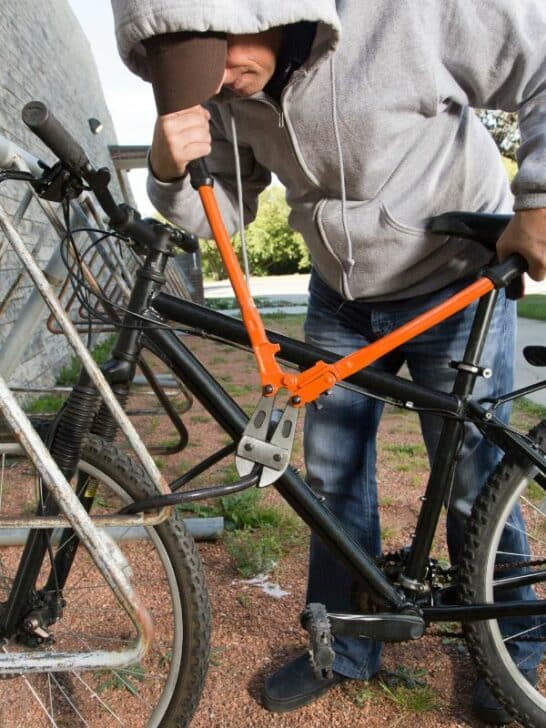
3. Under A Waterproof Bike Cover
To protect your bike from the rainy water and snow known to rust and corrode metals after long periods of time, you can opt for a waterproof bike cover. In addition to being water-resistant, it should also cloak your bike from prying eyes, or a thief looking for an easy target.
Should you get a bike cover, ensure to get one with breathable material. This will prevent your bike from being within an enclosed damp-like environment filled with moisture under the cover. This way, you can further reduce the chances of your bike rusting and corroding while stored outside.
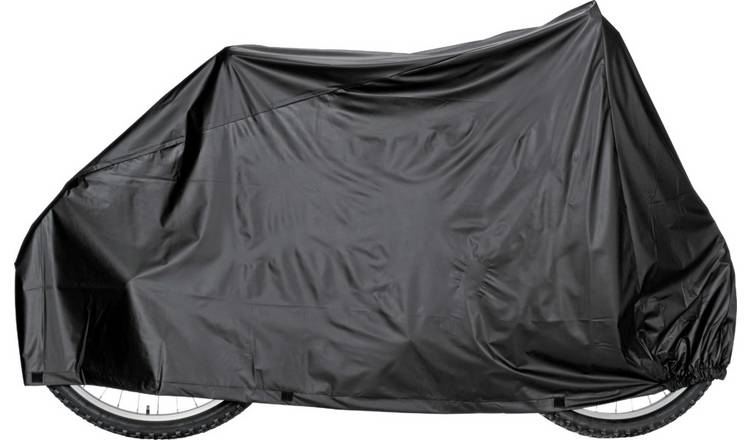
4. Consider Bike Insurance
Let’s say your only option for storage is next to an exposed bike rack outside and you have opted (or not) to store it in a well-lit area, with a bike alarm, and so on. You could go a step further by getting bike theft insurance for your bike.
In the worst-case scenario that your bike is stolen, bike insurance should allow you to get a replacement. Do make sure to thoroughly check the policy details before you opt for one though as I’ve found that different providers have different requirements. For instance, one might require you to only keep your bike outdoors for up to 24 hours in a secure location.
Separately, you could consider getting a GPS bike tracker – which can track the location of your bike if it is stolen. This should be useful to the police in tracking down your bike to find it. Ensure to keep the tracker in a concealed place, such as under your saddle.
5. Rent Space In A Nearby Self-Storage Unit
As previously mentioned, storing your bike indoors is the best way to keep your bike. If this is not possible you could consider renting a nearby self-storage unit. The downside of a storage unit is that it’s normally a recurring monthly expense and could be expensive depending on where you live and your budget.
However, they are definitely worth checking out due to their ease of access, and since you can also keep your other belongings in there. If you were already looking to create space in your apartment and were looking to offload some personal goods, then getting one could be a no-brainer.
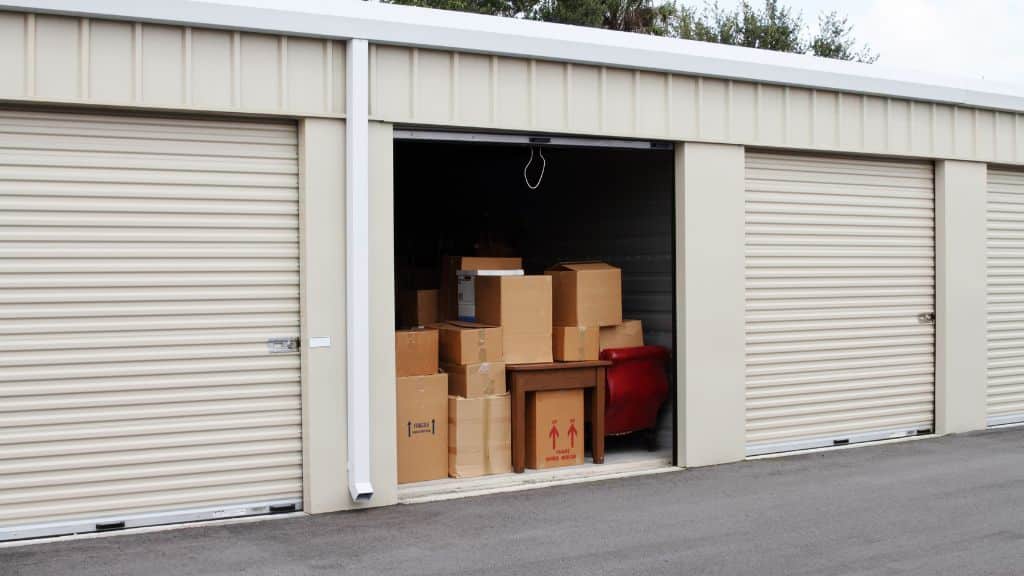
6. In the Basement or Shared Stairwell In Your Apartment Building
If your apartment building has a basement, you could explore whether you could keep your bike in there. Do speak to the building manager first, to find out whether there would be any restrictions in doing so.
Should that not be an option, then look around the shared stairwell of the building. Your building manager may allow you to store it next to it, so far as it’s not blocking a pathway next to the stairs.
Whichever one you opt for, I suggest that you lock your bike to ensure that it’s secure.
7. In A Shed or Under an Awning
If you don’t live in a high-rise apartment, then you may have space in the garden or in an enclosed, private outdoor space where you can keep your bike.
If so, then I still suggest that you keep it under a structure (ie. a shed, awning, or tent) instead of leaving it uncovered. This ensures your bike is not exposed to rain and direct sunlight for long periods – which as previously mentioned can damage your bike over time.
Should you keep it in a shed, do ensure to waterproof and damp-proof it prior to the rainy and snowy seasons, as water ingress and condensation could rust and corrode your bike inside it. Refer to this guide here on how to water and damp proof your shed for further information.
8. In Your Office or Other Space At Work
Now this is where I hope you are in good standing with your boss.
But seriously, I’ve found places I’ve previously worked to be accommodating with storing my bike indoors – whether it’s an unused closet, a basement, or some obscure storage space.
I even once had a manager allow me to store my bike next to my office cubicle. He was a cyclist too, so that helped – but I did ask very nicely and agreed to not bring it inside it during wet conditions.
So I encourage you to have that discussion with your boss or the facilities manager in your workplace, to explore where indoors you could store your bike. It could significantly reduce the hassle of finding somewhere outdoors to store it at work.
9. In a Nearby Parking Garage
I’m sure if you already have a garage at home then you’ve considered this (or are already) storing your bike there. If you live in an apartment, it’s possible that your apartment building (or one nearby) has a car park in the basement or nearby where you could store your bike.
If you opt for this, do speak to the facilities manager or your landlord first to make sure that it’s fine to do so.
Should this not be an option for you, then you could still rent a spot in a nearby parking garage – just contact the company that manages that garage to see if that could work out!
We’ve compiled the tips listed in this article into a cool infographic to keep handy or share with that cyclist you know who is notorious for leaving their bike outdoors. Check it out below:
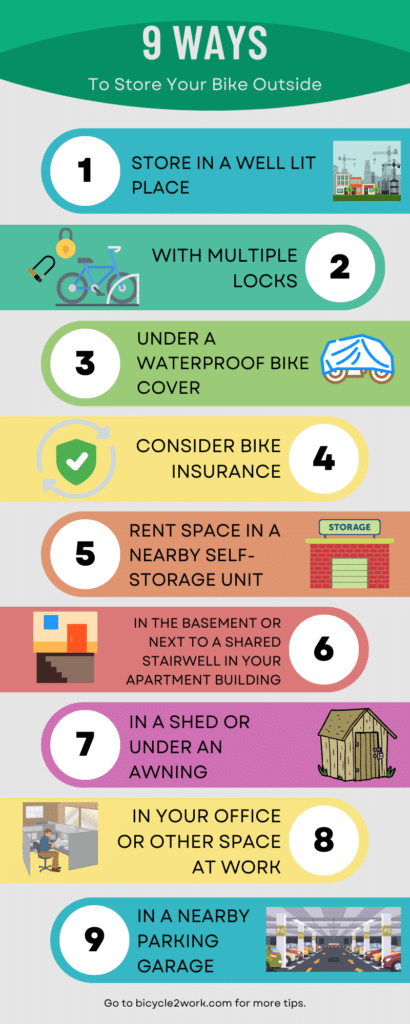
Conclusion
So there you have it – 9 great ways to store your bike outdoors. It’s not always easy to find safe, secure ways to keep your bike outside, but we hope the tips listed in this article at least give you a starting point to figure it out.
Among other benefits, cycling is a fantastic way to keep fit and cut transport costs. It would be a shame to not be able to enjoy all the benefits due to not finding a suitable way to store your bike.
Whether you are an apartment dweller, have no space to keep it indoors, or have no other option but to keep your bike outside, I’m sure these will come in handy.
Happy pedaling!
Frequently Asked Questions (FAQs):
Can you store a bike outside without it rusting?
To significantly reduce the rate of rust while storing your bike outside use a waterproof bike cover. This should protect your bike from rain and water splashes from the ground up which accelerate rust buildup on your bike.
Ensure that the cover is also made from breathable material, which should further reduce the rate of rust and corrosion. It does this by ensuring your bike isn’t trapped within a damp-like environment filled with moisture under the cover.
Is it OK to leave a bike outside in the winter?
Storing a bike outside in the winter is not ideal, as the rain and snow will break down and rust your bike. Having said that, I know cyclists who have no other option but to keep their bikes outdoors during winter. If this is you then ensure to get a breathable, water-resistant bike cover to help protect your bike.
Is it OK to store bikes in an outdoor shed?
Sheds are water-resistant and sturdy against wind and heavy snow, making them a good way to store your bike.
However, ensure to water-proof and damp-proof your shed before your store your bike inside it. That’s because water ingress and condensation in the shed during cold, rainy seasons could increase rust and corrosion on your bike. I found this site to be a useful resource for waterproofing and damp-proofing your shed before storing your bike.
How do I keep my bike safe outside?
When storing your bike outside, you could so do in a well-lit visible area under a waterproof and breathable bike cover, use a bike alarm and use multiple locks to secure your bike.
